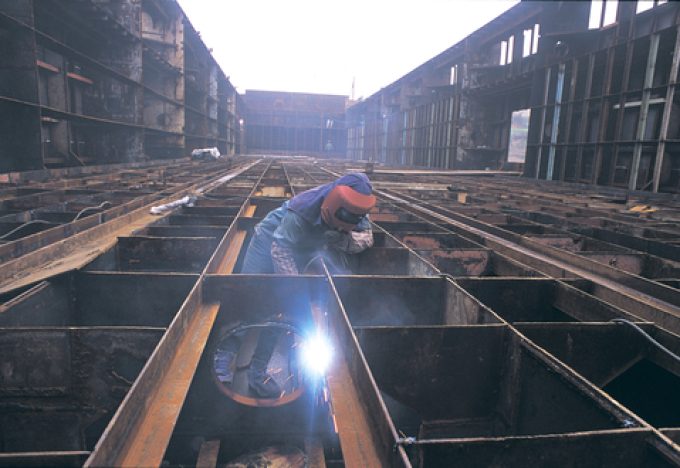NYK signs up for direct air carbon capture scheme
Direct Air Carbon Capture and Storage (DACCS), derided as one of the least efficient possible ...
FDX: ABOUT USPS PRIVATISATIONFDX: CCO VIEWFDX: LOWER GUIDANCE FDX: DISRUPTING AIR FREIGHTFDX: FOCUS ON KEY VERTICALFDX: LTL OUTLOOKGXO: NEW LOW LINE: NEW LOW FDX: INDUSTRIAL WOESFDX: HEALTH CHECKFDX: TRADING UPDATEWMT: GREEN WOESFDX: FREIGHT BREAK-UPFDX: WAITING FOR THE SPINHON: BREAK-UP ALLUREDSV: BREACHING SUPPORTVW: BOLT-ON DEALAMZN: TOP PICK
FDX: ABOUT USPS PRIVATISATIONFDX: CCO VIEWFDX: LOWER GUIDANCE FDX: DISRUPTING AIR FREIGHTFDX: FOCUS ON KEY VERTICALFDX: LTL OUTLOOKGXO: NEW LOW LINE: NEW LOW FDX: INDUSTRIAL WOESFDX: HEALTH CHECKFDX: TRADING UPDATEWMT: GREEN WOESFDX: FREIGHT BREAK-UPFDX: WAITING FOR THE SPINHON: BREAK-UP ALLUREDSV: BREACHING SUPPORTVW: BOLT-ON DEALAMZN: TOP PICK

This week a new car carrier design, with an ammonia tank designed by HD Hyundai Heavy Industries (HD HHI), garnered approval in principle from Korean Register.
The design features a fuel containment system that can withstand the corrosiveness and toxicity of ammonia, and Korean Register’s decision joins several other recent endorsements of ammonia-powered vessels by class societies, including by Lloyd’s Register (LR), which this week signed-off a new ammonia tanker design.
Several new car carrier vessels commissioned in recent years are powered by LNG, but are also ‘ammonia-ready’, meaning space and, in some cases, piping has been provided in expectation that ammonia tanks will be retrofitted.
However, a new safety white paper, Why are the fires not going out?: unveiling the true cost of inadequate fire safety inspections, published this week by Survitec, highlights the increasing number of safety lapses in shipping, including Allianz insurance data suggesting fires on all vessel types could be increasing 17% year on year.
“While fire detection and protection measures onboard ship have improved significantly over the years, there has also been a worrying hike in fire safety-related deficiencies, with an increase in reported safety breaches and subsequent detentions following port state control inspections,” says the paper.
A recent spate of fires on car carriers has fuelled a backlash against lithium-ion batteries, with some operators like MOL refusing to carry used electric cars.
Lithium-ion batteries were implicated in the week-long blaze on Freemantle Highway last year and identified as the cause of the Felicity Ace sinking the year before.
As the ro-ro and pure car and truck carrier (PCTC) sectors grapple with the question of whether safe transportation of lithium-ion batteries is even possible, considerable research and development is under way to mitigate new harm from introduction of ammonia – a highly toxic gas – as a fuel, LR’s global gas technology director, Jose Navarro, told The Loadstar.
“Every part of the design of the ammonia fuel system powering a ship, from bunkering connection to the final exhaust gases – including any possible controlled or uncontrolled emergency venting situation – is designed and reviewed through a meticulous process to ensure that the design is inherently safe,” he explained.
“Through such design review, we are not only looking into the new construction process, but also through the life of the ship, considering maintenance and operability, to ensure that no activity is leading to any possible toxic exposure.”
With ammonia-carriers already plying the oceans, there is no reason to believe that introducing it as fuel for other ship types would pose an unprecedented threat, Mr Navarro explained.
“These vessels operate in accordance with very stringent safety requirements and to date we have yet to experience the loss of an ammonia-carrier,” he said. “We as an industry can learn much from the safety practices governing the carriage of ammonia as cargo, as we pursue the possibilities of the gas in shipping’s energy transition.”
Comment on this article
jay shah
June 07, 2024 at 12:18 pmThis post is a goldmine of information. I learned so much about [topic], and your writing style made it an enjoyable read. Looking forward to more content like this!